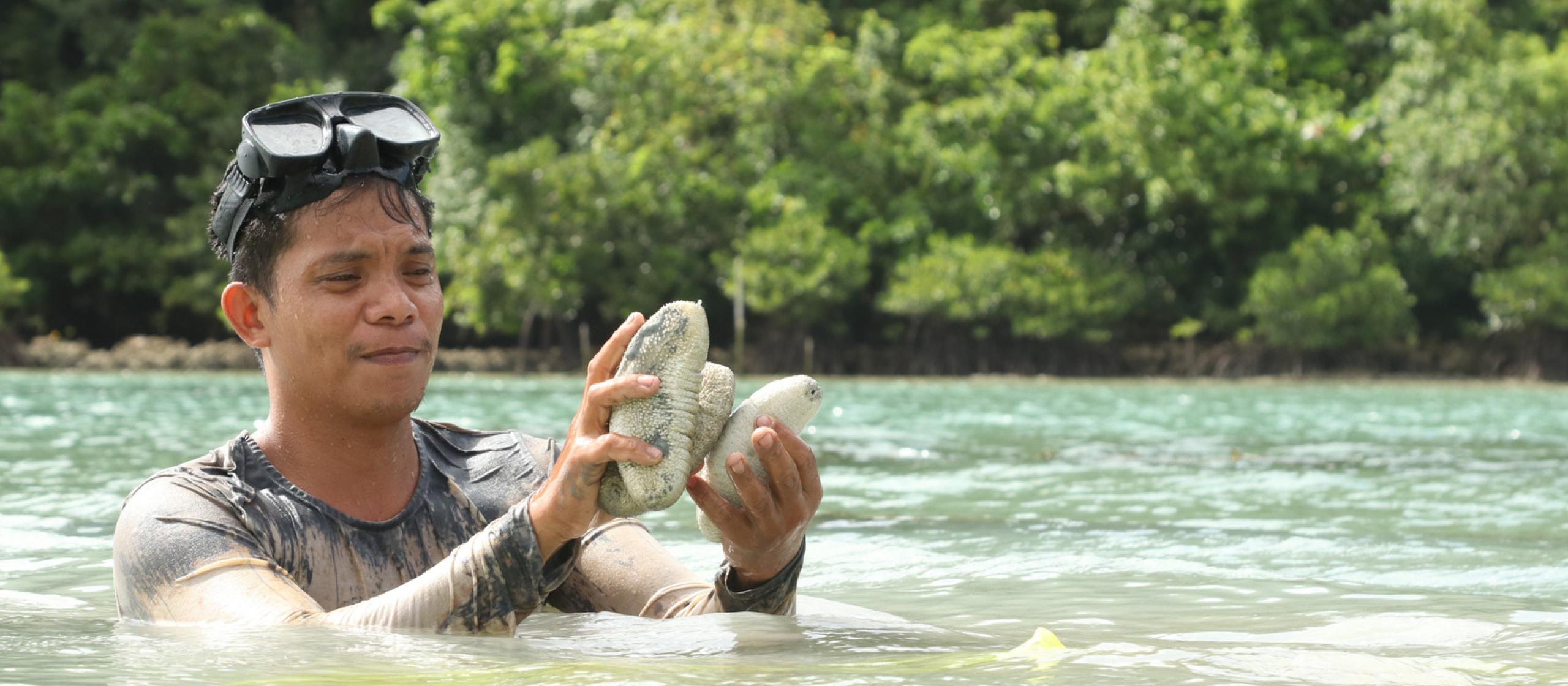Research teams from UP-MSI and UniSC have also identified more suitable areas for hatcheries and sea ranches, using cheaper and more locally accessible hatchery production materials, minimising impacts of predators on sandfish stocks, and improving post-harvest processing methods. The project also supports the Philippine Government’s research and development programs to improve the fisheries sector in the country.
‘What we have been developing is a community-based sandfish culture management system for smallholder fishers. Sandfish mariculture is a relatively new technology, a solution to help increase, improve the quality of, and manage sandfish stocks,’ said Professor Meñez.
‘We are simulating what’s happening in nature. We produce the sandfish larvae and juveniles in a hatchery and then grow them to an appropriate size for release into the sea, improving their probability of survival.’
Through an earlier project funded by the Philippines Government’s Department of Science and Technology, the UP-MSI developed the ‘floating hapa’ technology, composed of mesh net enclosures that serve as ocean nurseries for growing sandfish juveniles. This technology was further improved and expanded with support from ACIAR.
While knowledge about hatchery and later-stage grow-out methods have significantly developed over the years, community-based sea cucumber farming of the juvenile sea cucumbers needs to be further strengthened.
In partnership with Guiuan Development Foundation, Inc (GDFI), the Department of Agriculture - Bureau of Fisheries and Aquatic Resources Region 8, Southeast Asian Fisheries Development Center/Aquaculture Department and Mindanao State University Naawan, community-based sea ranches have been established at 8 sites across Pangasinan, Zambales, Iloilo, Eastern Samar, and Misamis Oriental provinces. A sea ranch is a protected area of about 5 hectares of inshore waters where sea cucumbers can be safely grown, maintained and harvested.
‘There is science in all aspects of sandfish production – from the hatchery to their release to the sea ranches. The animal tends to stay in the general area of release and so can be left to grow to the optimal harvest size for commanding higher prices in the market,’ said Professor Meñez.












